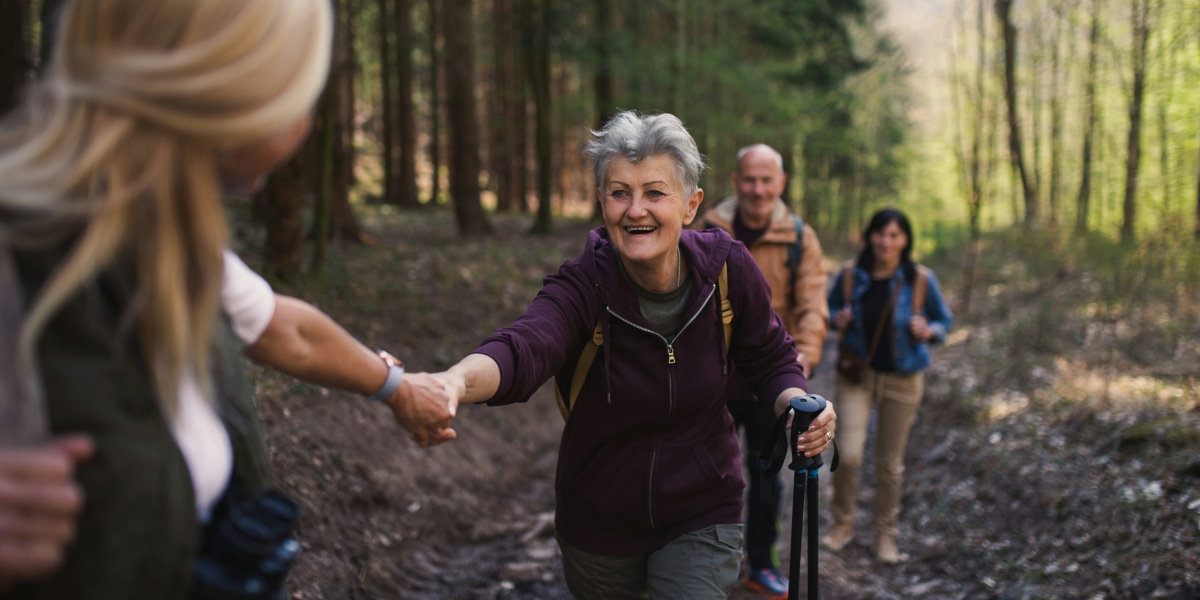The Importance of Posture as We Age
As we age, many of us focus on maintaining a healthy lifestyle through regular exercise, balanced nutrition, and mental well-being. However, one aspect of health that is often overlooked is posture. Posture is more than just standing or sitting up straight—it plays a critical role in maintaining physical health, preventing discomfort, and improving quality of life as we age. Whether we’re aware of it or not, our posture affects how our muscles, joints, and bones function, which directly impacts mobility, pain levels, and overall physical comfort.
Read Also: Swimming for Stress Relief: A Dive into Tranquility
The Role of Posture in Overall Health
Posture refers to the alignment of your body when standing, sitting, or moving. Proper posture keeps the bones, joints, and muscles in an optimal position, allowing the body to move efficiently. For older adults, maintaining good posture becomes even more important, as the body naturally undergoes changes that affect muscle strength, bone density, and flexibility.
As we age, muscles weaken, bones become less dense, and connective tissue (such as ligaments and tendons) loses elasticity, all of which can negatively impact posture. When posture is not maintained properly, it can lead to various physical issues, such as pain, discomfort, and decreased mobility. Over time, poor posture can also lead to more serious conditions, like osteoarthritis, degenerative disc disease, and chronic back pain.
Maintaining good posture is therefore essential for reducing strain on muscles and joints and ensuring that the body moves in the most natural and efficient way possible. It also helps maintain balance and prevent falls, a common concern for older adults.
How Aging Affects Posture
With age, certain physiological changes can compromise posture. Here are some common factors that contribute to poor posture as we age:
1. Loss of Muscle Mass and Strength
As we age, we naturally lose muscle mass—a condition known as sarcopenia. This loss of strength can result in weakened postural muscles, which are responsible for supporting the spine and maintaining an upright position. Weakened muscles make it harder to maintain proper posture, leading to slouching, rounding of the shoulders, and forward head posture.
2. Degeneration of the Spine
The spine undergoes natural changes with age, including the loss of disc height and flexibility. Over time, the discs in the spine can lose water content and become less effective at cushioning the vertebrae. This degeneration can lead to conditions like kyphosis (a rounded upper back) or scoliosis (an abnormal curvature of the spine), which can make it difficult to maintain an upright posture.
3. Decreased Flexibility
As we age, the tissues around our joints (such as muscles, tendons, and ligaments) lose flexibility, which can make it harder to maintain a full range of motion. Tight muscles and stiff joints can pull the body out of alignment, contributing to poor posture.
4. Imbalance and Reduced Coordination
Aging can also affect our balance and coordination. Weak muscles and poor posture can cause unsteadiness, leading to an increased risk of falls. When we begin to lose balance, we may unconsciously adjust our posture to compensate, often leading to improper alignment.
5. Joint Pain and Inflammation
Many older adults experience joint pain, whether from arthritis or other conditions. Joint pain can lead to a person adopting a protective posture that shifts the body out of alignment. Over time, this can result in poor posture and additional discomfort.
The Benefits of Good Posture as We Age
While the physical changes associated with aging can make it more challenging to maintain good posture, doing so offers numerous benefits that can help improve both physical and mental well-being. Here are some of the key benefits:
1. Reduced Back and Neck Pain
One of the most common consequences of poor posture is back and neck pain. Slouching or hunching over can place undue stress on the spine, leading to discomfort and even long-term pain. By maintaining good posture, you can reduce the strain on your spine, muscles, and ligaments, helping to prevent pain and stiffness.
2. Improved Breathing and Circulation
Good posture opens up the chest and allows the lungs to expand fully, making breathing more efficient. This is especially important as we age, as lung capacity naturally decreases over time. Additionally, proper posture can improve circulation, as it helps maintain optimal blood flow throughout the body.
3. Increased Energy Levels
When the body is aligned correctly, muscles and joints don’t have to work as hard to support your weight. This can reduce fatigue and increase energy levels, helping you feel more alert and active throughout the day.
4. Better Digestion
Slouching or sitting with a rounded back compresses the organs in the abdomen, including the digestive system. Maintaining an upright posture can help avoid this compression, supporting proper digestion and preventing issues like acid reflux and constipation.
5. Enhanced Mobility and Balance
Proper posture helps with balance, coordination, and body alignment. When the body is aligned properly, the risk of falls is reduced, and mobility is improved. This is particularly important as we age, as falls can lead to serious injuries.
6. Boosted Confidence
Good posture can also have a psychological impact, contributing to a sense of confidence and well-being. Standing tall can make you feel more self-assured and in control, improving your overall mental health and outlook.
Tips for Improving Posture as We Age
Maintaining good posture as we age is essential, but it requires conscious effort. Here are some tips to help improve and maintain proper posture:
1. Strengthen Core Muscles
A strong core is essential for supporting the spine and maintaining good posture. Exercises that target the abdominals, lower back, and pelvic muscles can help improve posture. Activities like yoga, Pilates, and specific core strengthening exercises are excellent for building strength in these areas.
2. Stretch Regularly
Stretching helps maintain flexibility and prevents tight muscles that can contribute to poor posture. Focus on stretching the hip flexors, hamstrings, back, and shoulders, which are common areas affected by aging. Regular stretching can improve your range of motion and ease stiffness.
3. Use Ergonomic Furniture
When sitting for long periods, especially while working or relaxing, ensure that your furniture is ergonomically designed to support good posture. Look for chairs that provide lower back support, keep your feet flat on the floor, and maintain a neutral spine position.
4. Stand and Walk with Proper Alignment
When standing or walking, focus on aligning your head, shoulders, and hips in a straight line. Avoid locking your knees, which can lead to misalignment. When walking, keep your head up and your chest open to promote an upright posture.
5. Seek Professional Help
If you’re struggling with maintaining good posture or experiencing pain, consider working with a physical therapist, chiropractor, or other healthcare professional. They can assess your posture and provide tailored exercises or treatments to improve alignment and relieve discomfort.
Read Also: Tech-Driven Business Opportunities to Pursue in 2025
Prioritizing Posture for Healthy Aging
Good posture is more than just a matter of appearance—it plays a crucial role in maintaining overall health, especially as we age. By staying mindful of our posture and taking steps to improve and maintain it, we can reduce pain, improve mobility, and enjoy a better quality of life. Whether through strengthening exercises, stretching, or seeking professional help, it’s never too late to prioritize good posture and the lasting benefits it offers.
A strong, aligned posture not only supports physical health but also contributes to greater energy, better confidence, and improved overall well-being as we age. So, stand tall—your body will thank you for it.








